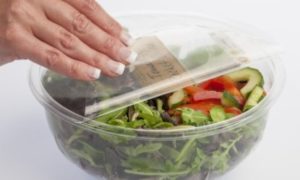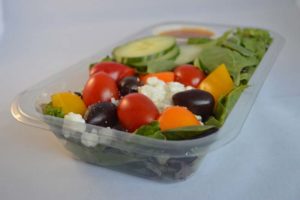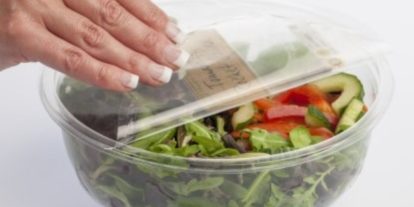
Plastic films for food packaging are often coated with one or more oxygen and/or water vapor barrier layers. It depends on the food packaged.
Apart from the well-known films such as aluminum vacuum metallised or aluminum foil laminates, the packages can be made of films coated with transparent barrier layers.
The main advantage of films with transparent barrier layers is that they make it possible to visualize the packaged food and thus reassure the consumer about what he buys.
One of the most widely used transparent barrier layers is PVdC, because it has several advantages: it provides a good barrier to water vapor (WVTR) and oxygen (OTR), it can also be printed in gravure or flexo printing techniques, and can be sealed on itself. But PVdC means chlorine.
Why is the presence of “chlorine” so decried?
Plastic packaging is often recovered by incineration, and in this stage, packaging containing PVdC can “release” dioxins. The incineration centers are equipped with filters that prevent the release of these toxic substances into the atmosphere, so do not be afraid of PVdC coated films.

Which chlorine-free transparent barrier layer?
– PVOH – EVOH
The coextruded or coated EVOH or PVOH resins provide excellent oxygen barriers (OTRs).
Care should be taken in the construction of the food packaging to protect the EVOH or PVOH layer from moisture as these EVOH or PVOH layers are sensitive to moisture. The EVOH or PVOH layer should be placed as far way from the humid environment as possible.
A combination of an EVOH layer with a plyolefin film will provide both a good moisture barrier (provided by the PE or PP film) and an excellent oxygen barrier provided by the PVOH resin or EVOH.
– Alumina oxide or silica oxide
A layer of aluminum deposited under vacuum giving an opaque apperance and causing the disadvantages mentioned at the beginning of the article can be replaced by aluminum oxide (AlOx). This layer of AlOx makes it possible to obtain a transparent layer with good performances for OTR and WVTR.
This layer of alumina oxide is a layer of a few nanometers and is very sensitive to scratching.
Given this major disadvantage, the layer will have to be protected, more generally “encapsulated” by laminating.
The vacuum metallising machines can metalise, both Al and AlOx.
Another oxide such as SiO x (silica oxide) also makes it possible to obtain a transparent barrier layer with a good level of barrier to gas and water vapor, but also remains a very brittle layer that must be protected.
To conclude
There are therefore different solutions of transparent barrier layers with or without chlorine, which make it possible to produce barrier food packaging (see article “barrier packaging”). It will nevertheless be necessary to choose the best technical and economic solution according to the levels of barriers required.
Pascal Rousset, R&D Manager

